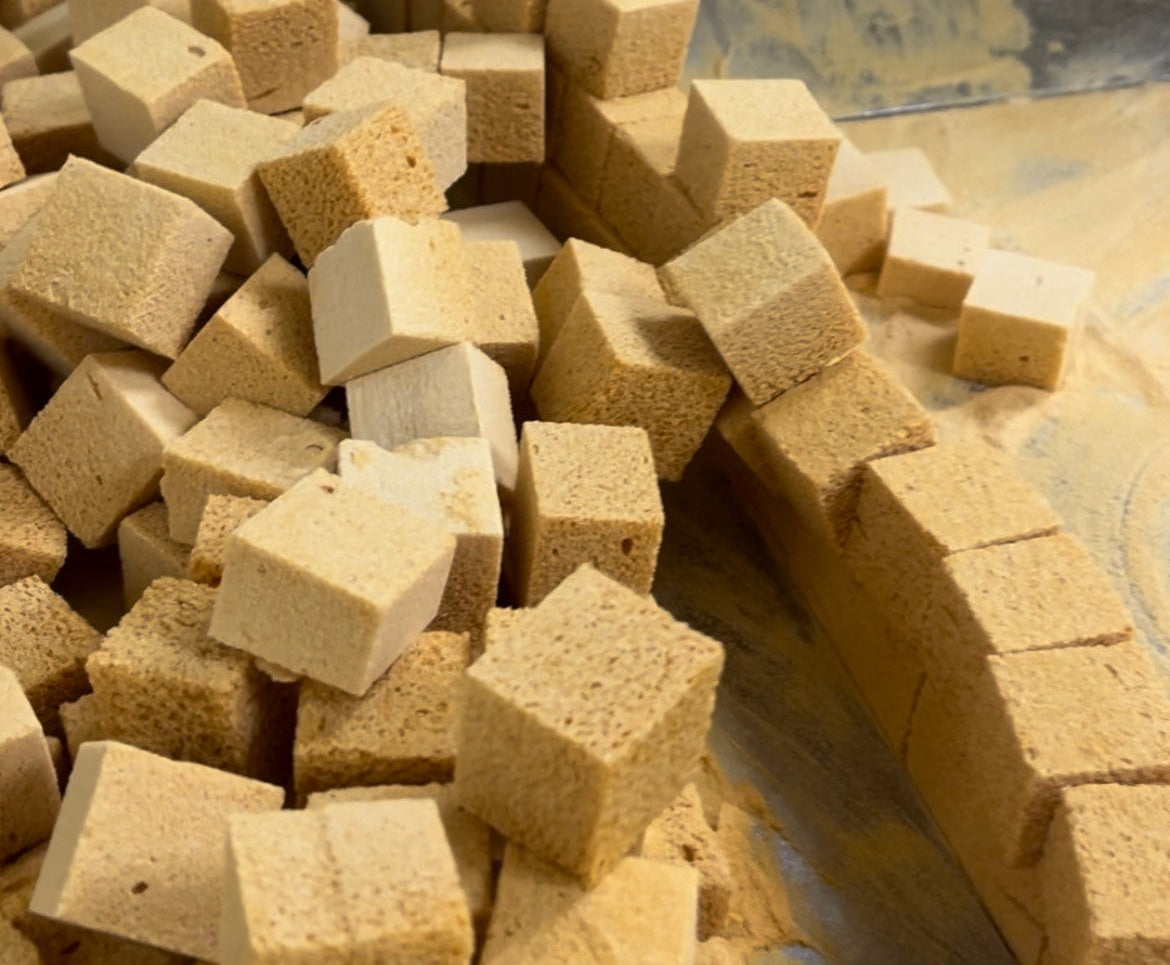
Allison from Instagram sent us this question:
"How come some sponge candy is lighter and denser and others are a darker color and less dense? Is there a reason? I have seriously wondered this since I was a child, and my parents would get sponge candy, and some pieces would “melt” in your mouth faster than other pieces."
We love this! As our social media posts often show (you know our catalog and website only show perfection, right?), every single piece of sponge candy is different. Texture and density vary, as does shape and stickiness. Here's why:
Sponge candy can indeed vary in texture depending on the environmental conditions during its preparation. Here’s why it behaves differently in different seasons:
- Humidity and Temperature Effects: Sponge candy is sensitive to humidity and temperature. In colder, less humid months, the candy tends to be lighter and more airy. This is because the cooler temperatures and lower humidity levels prevent the sugar syrup from absorbing excess moisture, allowing it to set with more air pockets inside, giving it a lighter texture.
- Summer Conditions: In contrast, during warmer and more humid months, the sugar syrup used to make sponge candy can absorb more moisture from the air. This results in a denser and potentially stickier final product. The increased humidity can affect how the candy sets, leading to a tighter structure with fewer air pockets.
So, if you've noticed that sponge candy made in the summer is denser and stickier compared to that made in colder, less humid months, it's due to these factors influencing the candy's texture during production. And because we cut our sponge by hand, every piece will be a little different than the one before it.
The cooking and cooling process of sponge candy impacts the sponge candy as well. It mirrors some principles seen in cooking other foods, like a roast. Here's how it works:
Cooling Dynamics of Sponge Candy
- Outside-In Cooling: When sponge candy is poured onto our trays the outer layer begins to cool and set first because it's exposed to cooler air. This rapid cooling solidifies the sugar mixture, creating a firm outer shell.
- Residual Heat: Meanwhile, the interior retains heat longer due to insulation from the outer layer. This residual heat allows the cooking process to continue internally even after the candy appears to have "set" externally.
- Effects on Texture and Color:
- Inner Texture: The continued internal cooking causes the sugars and baking soda (or other aerating agents) to react more, which can produce a lighter and airier texture in the center.
- Color Variance: The extended cooking time inside can also lead to caramelization of the sugars, darkening the color of the internal portion compared to the outer edges.
This process explains why the inside of sponge candy can often be darker, airier, and more fragile, while the outer portions might be denser and slightly lighter in color. It's a perfect balance of science and artistry in candy-making!
We love questions like this Allison! Thanks for asking.

Allison on Jan 17, 2025
Such good info here. Makes me love your sponge candy even more